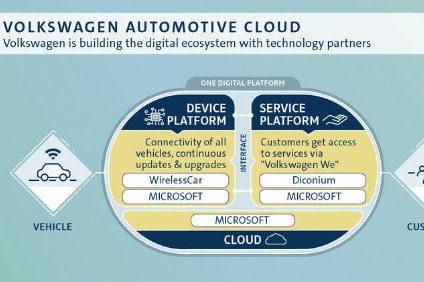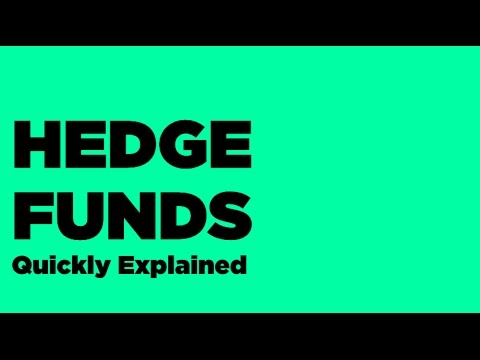Contents:


We can public accounting financial forecasts using a variety of techniques. After deciding the goal of financial forecasting, the management can establish the factors needed. The balance sheet provides a summary of the company’s financial position. It consists of assets like cash on hand, money in the bank, etc.
Next, there will be a sector containing columns for each data point within your chosen period, such as for each previous month or a year (if you’re analyzing business data from several years back) in chronological order from the earliest to the latest. In financial forecasting, businesses project their financial statements to predict the company’s future. When it comes to how to forecast a company’s financials, there’s no one right way. However, spending any time conducting financial forecasting reveals that pouring over massive amounts of historical data can be exhausting. And spending all of the budget and time on historical data and linear analysis generates financial forecasts that are frequently doomed to irrelevance thanks to changes in consumer behavior or market volatility.
Financial Forecasting Methods
Fn 24 AS 3315 discusses the practitioner’s report for summarized financial statements derived from audited financial statements that are not included in the same document. Fn 21 However, the practitioner may issue the standard examination report on a financial forecast filed with the SEC that meets the presentation requirements of article XI of Regulation S-X. Fn 14 AS 3315,Reporting on Condensed Financial Statements and Selected Financial Data, discusses the practitioner’s report where summarized financial statements are derived from audited statements that are not included in the same document. Whether sufficient pertinent sources of information about the assumptions have been considered. Examples of external sources the practitioner might consider are government publications, industry publications, economic forecasts, existing or proposed legislation, and reports of changing technology. Examples of internal sources are budgets, labor agreements, patents, royalty agreements and records, sales backlog records, debt agreements, and actions of the board of directors involving entity plans.
Experts widely agree that a solid financial plan is built on both forecasting and sound spending guidance. While some use the terms “financial forecasting” and “budgeting” interchangeably, they are separate processes. It’s not accounting, and it’s not budgeting in the traditional sense.
- With NetSuite, you go live in a predictable timeframe — smart, stepped implementations begin with sales and span the entire customer lifecycle, so there’s continuity from sales to services to support.
- A good rule of thumb here is to look at the business software you’re already using.
- Traditionally, a company will designate a fiscal year and create a budget for the year.
- It is important to note that the balance sheet is dependent on changes in the income statement.
- At the same time, if forecasting is not conducted, there can be a chance of oversight and piling up of wrong decisions and inaction.
This will help identify future revenue and expenditure trends that may have an immediate or long-term influence on government policies, strategic goals, or community services. An effective forecast allows for improved decision-making in maintaining fiscal discipline and delivering essential community services. Financial forecasting is a process through which organizations can shape realistic expectations surrounding future results and prepare for what’s ahead.
Financial Forecasting in the Budget Preparation Process
Budgeting, planning and forecasting software can be purchased as an off-the-shelf solution or as part of a larger integrated corporate performance management solution. By the start of the 2000s, companies gained access to ever-growing operational data sources, as well as information outside corporate transaction systems — such as weather, social sentiment and econometric data. The vast amounts of available data for forecasting created a need for more sophisticated software tools to process it. At the final step, you’ll need to fill in your forecasting part with the projected growth numbers for the upcoming months (depending on how far in the future you’re forecasting). These numbers can be the same (if you’re expecting to grow 5% every month, for example) or differ from month to month, depending on the trends you have found. For instance, you know that certain months are less profitable than others due to seasonality .

Let’s compare budgeting and financial forecasting to see the difference. Long story short, forecasts help control finances and keep the business in good health, projections show the outcome of the planned events, and financial models help evaluate the possible impact of potential events before making important decisions. The act of forecasting involves making estimates using data from the company’s historical and past events. Financial planning considers savings and investments to plot a future financial outcome.
What is a Forecast?
Typically covering one year, budgets include expected cash flows and debt reduction, estimates of revenues and expenses, and a point of comparison for actual results to calculate variance from financial forecasts. Financial forecasting is the process of estimating or predicting how a business will perform in the future. The most common type of financial forecast is an income statement; however, in a complete financial model, all three financial statements are forecasted. In this guide on how to build a financial forecast, we will complete the income statement model from revenue to operating profit or EBIT. On the one hand, financial forecasting entails predicting the business’ future performance.
If such interest rates, principal payments, and funding requirements are lower than those assumed, such adjustments would not adversely affect the forecast. The circumstances described below, although not necessarily resulting in modifications to the practitioner’s opinion, would result in the following types of modifications to the standard examination report. Hypothetical assumption—An assumption used in a financial projection to present a condition or course of action that is not necessarily expected to occur, but is consistent with the purpose of the projection.
Financial forecasting involves assumptions as well to equip such unforeseen factors. Financial forecasting is the estimation of a company’s future financial performance. It uses past performance records and present-day trends for the projection.
Artificial Intelligence in Accounting Market 2023 Growth, Trend … – Digital Journal
Artificial Intelligence in Accounting Market 2023 Growth, Trend ….
Posted: Fri, 21 Apr 2023 10:48:21 GMT [source]
It also gives management valuable insights into the way the business performed in the past and the way it will compare in the future. Beyond informing internal fiscal controls and decisions, financial forecasts are essential in investor relations and when seeking loans. Banks and other funders weigh forecasts in their own decision-making processes. Likewise, information gathering and software play a key role in the financial forecasting process. The fact is, companies don’t end up well-capitalized, with strong balance sheets and healthy cash flows by chance. Financial health is a function of rigorous data analysis, deep familiarity with the business and up-to-date customer and market insights.
Drive Business Performance With Datarails
Software applications such as Microsoft Excel became widely popular for financial reporting. However, Excel programs and spreadsheets were prone to input errors and cumbersome when various departments or individuals needed to collaborate on a report. Needless to say that the best strategy is to find a balance between historical and research-based forecasting. Monitor where your money is really going and create financial awareness across your organization with expense tracking in Forecast. Forecast provides you with a holistic view of your project budget.
Our responsibility is to express an opinion on the projection based on our examination. The four major components of financial forecasting are projected income statement, cash flow, balance sheet, and funding sources. Financial forecasting has several methods to calculate the fundamentals of financial indicators. Delphi, percent of sales, moving average, etc., are some methods. Based on factors such as expenses and income, cash flow forecasting involves estimating cash flow in and out of the business across a defined fiscal period.
S&P 500 Forecast: Continues to See Rangebound Trading – DailyForex.com
S&P 500 Forecast: Continues to See Rangebound Trading.
Posted: Mon, 24 Apr 2023 10:20:28 GMT [source]
Leading companies have moved to solutions that address the full planning cycle — data collection, modeling, analytics and reporting — on a common planning platform with lean infrastructure requirements. Such platforms can handle a diverse range of business functions, from budget-focused finance tasks to, for example, supply chain-focused planning for retail environments with thousands of SKUs . Forecastingtakes historical data and current market conditions and then makes predictions as to how much revenue an organization can expect to bring in over the next few months or years. Forecasts are usually adjusted as new information becomes available. That’s especially true if you require short-term forecasting to control the state of finances and allocate cash and resources wiser.
The process of analyzing historical data and trying to predict the future is an important accounting process that helps business leaders develop comprehensive plans and learn from past results. Besides the practical benefits we’ve discussed, the process of developing a financial forecast forces finance teams and line-of-business colleagues to stop and reflect on the value of rolling forecasts. Forecasting is determining what is going to happen in the future by analyzing what happened in the past and what is happening now. It’s a planning tool that helps businesses adapt to uncertainty based on predicted demand for goods or services. Data shows that business leaders recognize the role their finance teams’ careful planning played in weathering an incredibly challenging period.
The goal here is to allow you to plan for the best and worst cases, allowing your business to proceed regardless. Both techniques are essential and form an integral part of the short term and long term decision making. For example, if budgets are not formulated, the company may become directionless. At the same time, if forecasting is not conducted, there can be a chance of oversight and piling up of wrong decisions and inaction. A long-term forecast will provide valuable output to the management for their strategic business plan.
- Put into practice one or more of the forecasting methods described above.
- An exception to status quo conditions might be changes in the financial/economic environment that are widely appreciated and/or assumptions about changes in the environment.
- When a forecast contains a range, the range is not selected in a biased or misleading manner, for example, a range in which one end is significantly less expected than the other.
- Items that can be forecasted in a Working Capital Schedule include accounts receivable, accounts payable, prepaid expense, other current liabilities, etc.
- Human judgement is key and the challenge is to process this judgement in an unbiased, logical way that results in quantitative estimates.
In the forecast, a time period will be determined , for which a projection of the anticipated transactions will be plotted. Fn 22 An example of a measurement departure is the failure to capitalize a capital lease in a forecast where the historical financial statements for the prospective period are expected to be presented in conformity with GAAP. Planning the examination engagement involves developing an overall strategy for the expected scope and conduct of the engagement. To develop such a strategy, the practitioner needs to have sufficient knowledge to enable him or her to adequately understand the events, transactions, and practices that, in his or her judgment, may have a significant effect on the prospective financial statements. A practitioner may perform an agreed-upon procedures attest engagement on prospective financial statementsfn 26 provided the following conditions are met.

Know when it’s time to make an adjustment to the forecast, versus providing feedback and working with your client to change their business process. Complicated software that allows you to customize everything about a forecast seems tempting because you have options. However, it’s actually those options that will get in the way of your ability to scale.
